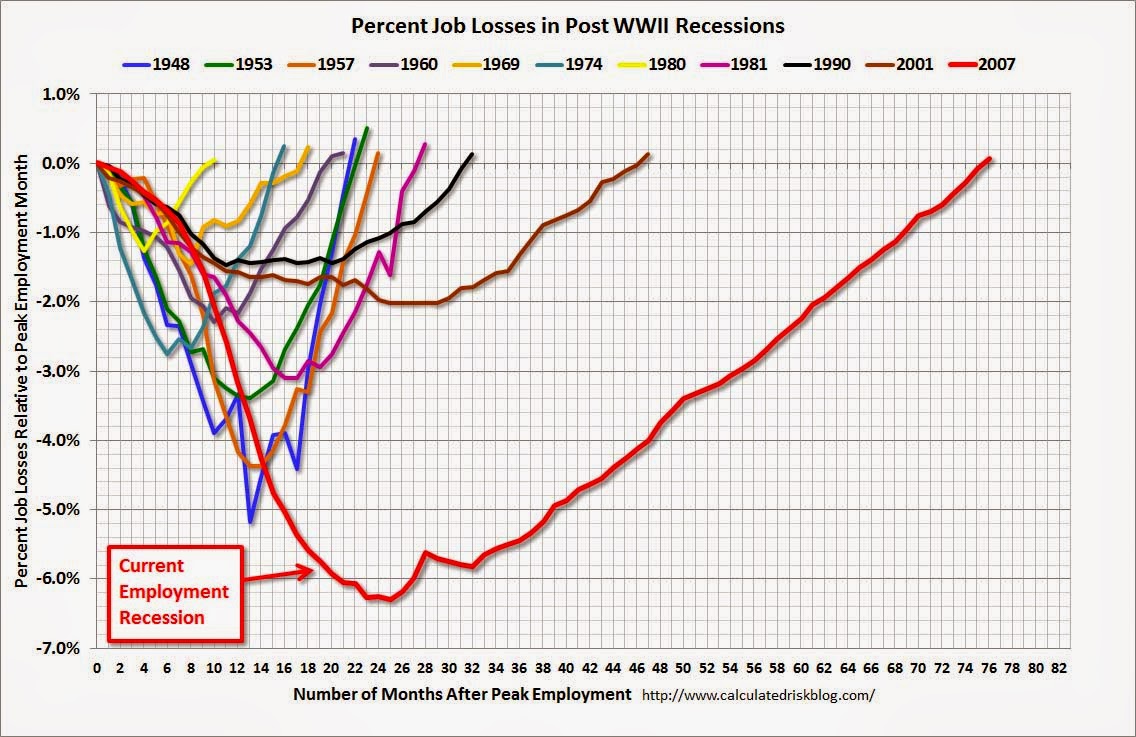For years now, Bill McBride at Calculated Risk has been running the chart below detailing how the jobs recovery from the Great Recession compares with those following other post-World War II downturns. The chart showed in a stark, simple way just how weak and protracted this latest labor market recovery has been. Business Insider took to calling it “The SCARIEST JOBS CHART EVER.”
The latest version of the chart shows we finally reached a major milestone: With the gain of 217,000 jobs last month, as announced today by the Bureau of Labor Statistics, total non-farm payrolls have hit a new all-time high, meaning the U.S. has recovered all the jobs lost during the recession. (Private payrolls had already reached a new high in March.)
Related: The Jobs Market Reaches a Meaningless Milestone
“It is probably time to retire this graph — until the next recession,” McBride wrote. “The Scariest Chart Ever Is Dead,” Business Insider blared.
And there’s more good news: May marks the fourth straight month of gains over 200,000. That hasn’t happened for more than 14 years, Ian Shepherdson, chief economist at Pantheon Macroeconomics said in a note to clients.
If the chart is dead, though, its lessons shouldn’t be buried. First, it took more than six years to get back to break-even. That’s an extraordinarily long time, especially when you remember that these aren’t just numbers on a screen — these are people’s lives and livelihoods we’re trying to track. Second, getting back above the flatline still means the economy is 7 million jobs behind where it should be when adjusting for population growth since before the recession. We've now added 8.8 million jobs after having lost 8.7 million in the downturn, but the employment-to-population ratio has fallen from 62.7 percent in December 2007 to 58.9 percent last month. The share of the working-age population with jobs still has a long way to go before we can say the labor market has really recovered.
Related: Why Unemployment Insurance Won’t Be a Campaign Issue
“Because the working-age population (and with it, the potential labor force) is growing all the time, we should have added millions of jobs over the last six-plus years just to hold steady,” Heidi Shierholz of the left-leaning Economic Policy Institute wrote in a blog post before the jobs report was released. “We are far, far from healthy labor market conditions.”
Shierholz’s takeaway: Total employment almost always climbs, so despite the celebratory headlines you might see, this milestone is much less meaningful than it might seem. “It is difficult to exaggerate how not a big deal this is.”
Top Reads from The Fiscal Times:





